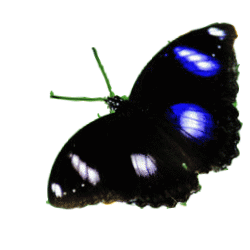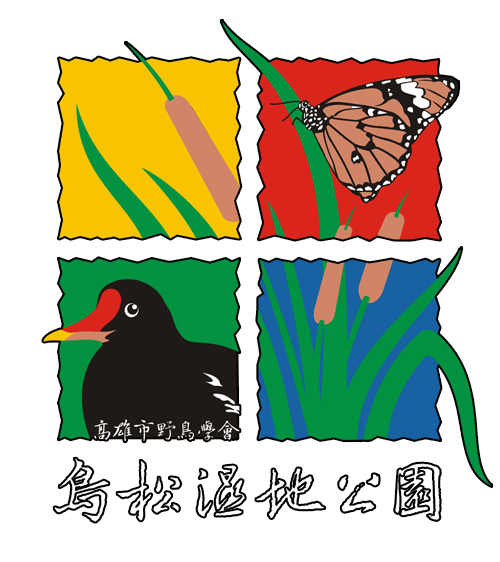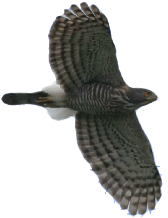01. When walking in Niaosong Wetland Park, we often get bit by mosquitoes and the like. What are they? Will I catch dengue fever?
Ans: The are Forcipomyia taiwanas (Shirakis), also called little black mosquitoes in Taiwan, a species of blood-sucking insects. Don’t worry about catchign dengue fever, which is spread by aegyptis and Asian tiger mosquitoes.
02. Why don’t you trim the plants? Why do you let the grass grow so tall?
Ans: Niaosong Wetland Park is an ecological park, not an ordinary park. The Wooden Trail and trails are regularly cleaned and pruned for the sake of easy pass by volunteers from Kaohsiung Wild Bird Society who adopted them. The other paths are left to creatures in the Park to reduce human interference. Fallen leaves and underbrush are the wildlife’s resting and feeding places.
03. Do you have toilets and garbage cans in the Park?
Ans: Because of the limitation of space, Niaosong Wetland Park doesn’t install any toilets. However, there are public toilets outside the Park and in the western parking space of Cheng Ching Lake Gate. And the Park removed the garbage cans because there were some occasions that visitors dumped their garbage from home there. Visitors should deal with their own garbage, not dumping it in the Park.
04. How long is the Niaosong Wetland Park’s Wooden Trail? What do you do when some parts of the Trail are damaged?
Ans: The length of the Trail is 828 meters. Please tell the Park volunteers if any visitors detect any damage.
05. Is Niaosong Wetland Park administered by Kaohsiung City Government? What is Kaohsiung Wild Bird Society’s role in it?
Ans: The organizer of the Park is Kaohsiung Tourism Bureau and Kaohsiung Wild Bird Society is the adoptor, in charge of management and promotional education activities. As for hardware maintenance, giving a previous notice to Kaohsiung Tourism Bureau is necessary.
06. What activities does Kaohsiung Wild Bird Society offer? What activities do you have here?
Ans: Kaohsiung Wild Bird Society holds various activities like static ecological lectures, a variety of camps, outdoor nature observations, bird watching activities, and eco-tours. Niaosong Wetland Park offers a wide selection of activities, such as ecological guiding tours, lectures, DIY activities for parents and children, and sessions on picture books, on holidays. Consult the following websites for detailed information.
07. Will English websites be set up in the future?
Ans: Niaosong Wetlad Park’s website on ecology is being built in full swing, gradually followed by an English website and guided tours.
08. Do you still need any volunteers? What does a volunteer do?
Ans: Kaohsiung Wild Bird Society has been needing all kinds of manpower and material resources since it adopted Niaosong Wetland Park. At present, we are not financially supported by the governments; thus, everyone is welcome aboard. A volunteer has to maintain and manage planting, give guided tours, work a shift on duty, investigate ecological situation, etc.
09. Why do you need financial donation?
Ans: As I’ve just mentioned, we are not financially supported by the governments. To maintain and manage the Park, we need at least NT$100,000 to NT$200,000 a year.
10. Why do you need the support and participation from the public?
Ans: Many people come to the Park to take walks, do exercise, pass their leasure time, photograph, draw pictures, or do nothing, just sitting there appreciating everything. Service (including the environments, coolness, chirping sounds from insects and birds, and dancing butterflies) in the Park doesn’t come from nowhere. Many volunteers devote their precious time, mentally and physically energies to make this come true. We really hope that visitors come here not only as enjoyers and consumers, but also as contributors, making the environments better.
11. What can I do for Niaosong Wetland Park?
Ans: Both manpower and financial support are necessary. If time is not permitted, please donate money or/ and materials. But if you can afford some time, come here to maintain the Park to make it better.
12. Why don’t you grow some beautiful grasses and flowers like most parks?
Ans: Those grasses and flowers most often seen in regular parks are all horticultural varieties. Except for lack of ecological function, they are short-lived, a waste of resources. Thus, we’ve decided to make more room for our local species.
13. How can we differentiate butterflies from moths?
Ans: In the daily life, people usually confuse butterflies with moths. To tell butterflies from moths, you just have to examine their feelers. Feeler fronts of butterlies are swollen club-shaped, while those of moths’ are thread-like, feathery, toothed-combed, or semi-tooth-combed (shaped like a comb).
14. Can we ride bikes in the Park area?
Ans: The Wooden Trail and paths are so narrow that riding bicycles on them is quite dangerous. Thus, it is not allowed.
15. Where do creatures displayed in front of the Nature Center come from?
Ans: They are of two origins. The first source are pupae and caterpillars cultivated and developed by Mother Butterfly volunteers, while the other are the Park’s own creatures (including exotic creatures). We keep them both for the sake of education.
16. Are the cabins open all year round?
Ans: Except for the Chinese New Year Holiday, they are open to the public. The business hours are from 8 to 12 in the morning, and from 1 to 5 in the afternoon.
17. Why is Kaohsiung also in change of plants? Are you only holding bird watching activities?
Ans: Kaohsiung Wild Bird Society is an ecological group. Birds need various animals and plants for their living. As a result, a complete food chain and healthy eco-system are necessary, which are also the objects of our learning and protection.
18. Is practicing Tai Chi causing harm?
Ans: Regular trampling and exercise will make the earth solid, deplete the soil, and the grasses and creatures living there unable to foster. We suggest that visitors shouldn’t do their activities at the same spot, letting the earth take turns resting, so as not to cause any serious and irrecoverable damage.
19. What are these plants, insects, and birds?
Ans: Commentary volunteers and commentary tour staff are stationed at fixed points on Sundays from 15:30 to 17:00 p.m. and on Mondays and Thursdays to give lessons and lectures. It is free for the public to participate in these activities. They can also apply for the training lessons on ecological investigations and narrator’s programs.
20. What creatures are in the Ponds?
Ans: Exotic fish are dominant in the Ponds, over 90 percent of which are tilapias, giant snakeheads, striped snakeheads, and red devils, with only a few locals.
21. What bird species are in the Park area?
Ans: Chinese bulbuls, sparrows, scaly-breasted munias, Ttreepies, black-naped blue monarchs, kingfishers, yellow bitterns, cinnamon bitterns, black-crowned night herons, Malaysian night herons, Muller's barbet, crested goshawks, little woodpeckers, etc. are regular dwellers. They are quite stable and fearless.
22. Why there is no creatures releasing here?
Ans: Releasing is an act incompatible with ecological standards. Many wild animals are captured and faced with death because of the act of releasing. After they are luckily released, they might be misplaced in the wrong habitats and experience fierce competition. As a result, the act of releasing should be discouraged.
23. Why can’t people feed ducks here?
Ans: Ducks will feed on giant Amazon snails. Because they can forage on their own, human feeding only degrades their ability to survive in the wild. Besides, this unsuitable may pollute the water and cause disorder.
24. Why can’t people fish or/ and catch frogs here?
Ans: The Park regulations say that fishing and capturing are not allowed. Creatures here are not only public properties but also objects of viewing and observing. Violators will be fined NT$1,800.
25. Why is the water in the Ponds smelly? Why does it turn into red?
Ans: Fruits in the trees often drop into the Ponds, which causes them to rot and stink. The water of the Ponds even turns red. We will dispatch volunteers to scoop them up.
26. Why don’t you deal with that big number of dead fish in the Ponds? Why don’t you let in more fresh water or install more waterwheel to pump up more water?
Ans: Occasionally, the Ponds have dead fish in them. The possible causes are multiple. For one thing, people’s careless releasing results in fierce competition for food or killing. For another, rising temperatures lead to eutrophication. Less dissolved oxygen makes fish unable to get enough oxygen and then die. Our emergency treatment is to pick up and bury them.
27. Can we collect plants, insects, or fruits in the Park?
Ans: According tp the Park regulations, no gathering of any animals and plants in the Park area. But when doing the trimming work, the pruned plants can be taken away for personal use.
28. Are birds there mandarin ducks? What are these ducks over here?
Ans: Most mullards and muscovy ducks in the Park are released by visitors. A few really make here their home and reproduce. We strongly advise not to release anything to the Park any more!
29. Are common moorhens released or local species? How long have they been here?
Ans: Common moorhens are local water birds here. They perch on wetland surroungings like lakes, ponds, rivers, and rice paddies, needing covert plants to hide, rest, and multiply.
30. Why are giant Amazon snails so big in size? What do they feed on? Are they influential on the ecology?
Ans: Giant Amazon snails are exotic species, feeding on aquatic plants, causing great harm to rice paddies and wetland ecology. They are to blame for the poor growth situation ofaquatic plants and aquatic plants in the Park area.
31. Why are Brazilian tortoises so big in size? What do they feed on? Are they influential in the Ponds?
Ans: Like giant Amazon snails, Brazilian tortoises are also foreign, feeding on shrimp and fish, harming local aquatic ecology as well.
32. Where are many striped skinks from? What do they feed on? What influence do they have on the ecology?
Ans: They are from abroad, hidden in the imported logs. Southeastern Asian lizards, they prey on the young of local lizards and cause great harm to local species.



















